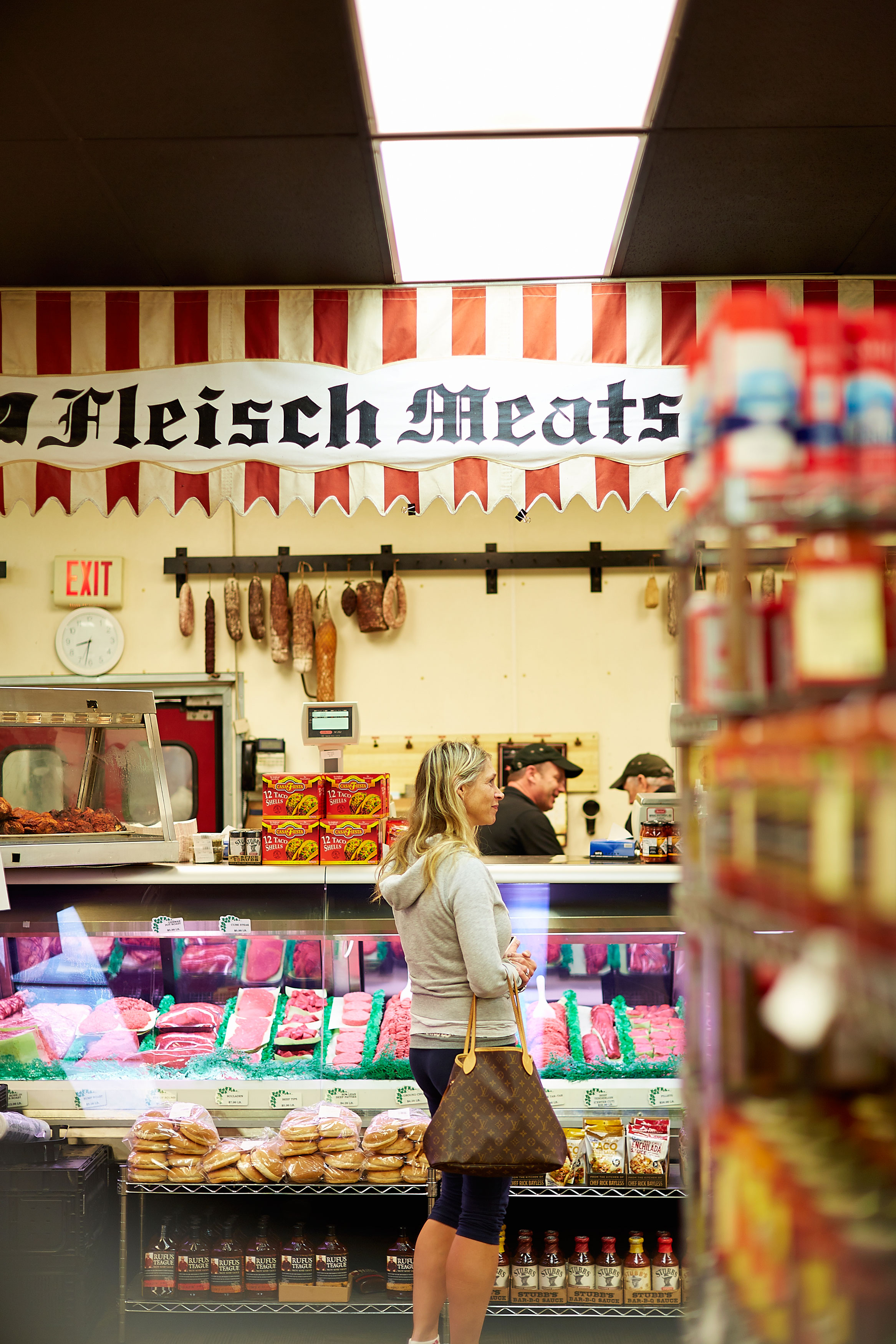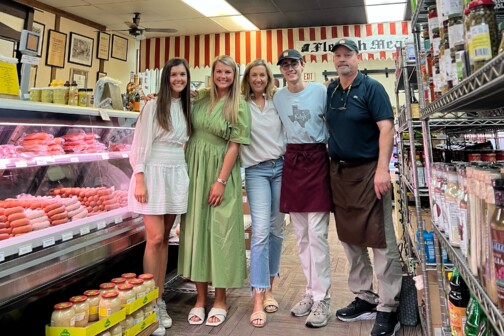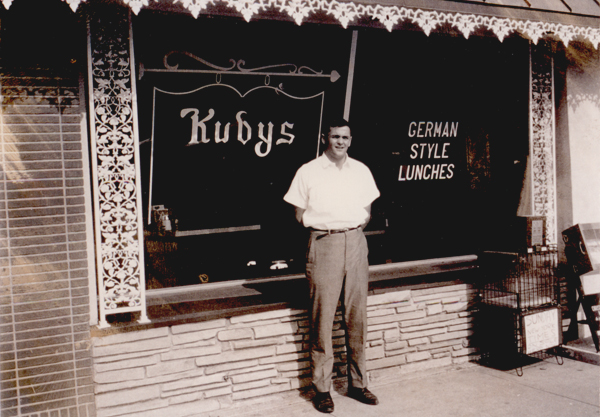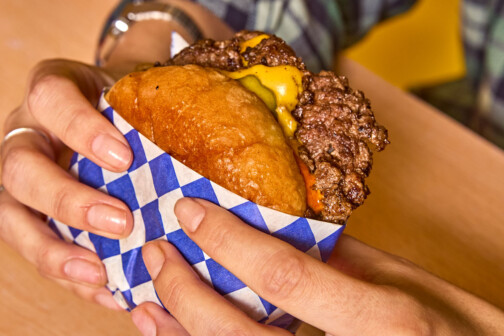The year was 1959. German immigrants Karl and Ria Kuby had relocated 500 miles north to Dallas from San Juan, Texas, where Karl had taken a job at Carl’s European Sausage Co. For two years, he honed his skills making sausages, a tradition in his family that dated back to 1728.
Karl opened a tiny market and restaurant in 1961 in the heart of Dallas County’s bourgeoning enclave, University Park, across the street from Southern Methodist University. The store, called Kuby’s Sausage House, had one lunch counter that Karl insisted on adding; he suspected North Texans would fall in love with the foods from his homeland, and they did. But the state’s love and history of German foods preceded Kuby’s Dallas arrival for more than 100 years.

Frederick Olmsted rode into Texas on Christmas Day in 1853 on the back of his four-legged companion, Mr. Brown. He was on the final leg of his tour to study the economic impact of slavery on southern states. Olmsted, a landscape architect, journalist, and social critic, lamented the abundant European food culture that Germans in Texas had created after fleeing their own country’s authoritarian government and crippling taxes. Olmsted later published a series of journal entries highlighting his opinions of the places he had visited.
“An excellent soup is set before us, and in succession there follow two courses of meat, neither of them pork, and neither of them fried, two dishes of vegetables, salad, compote of peaches, coffee with milk, wheat bread from the loaf, and beautiful and sweet butter …. not only such butter as I have never tasted south of the Potomac before, but such as I have been told a hundred times it was impossible to make in a southern climate. What is the secret? I suppose it is extreme cleanliness, beginning far back of where cleanliness usually begins at in the South, and careful and thorough. We then spent an hour in conversation with the gentlemen who were in the room. They were all educated, cultivated, well-bred, respectful, kind, and affable men. All were natives of Germany, and had been living several years in Texas.”
– Frederick Olmsted
Olmsted noticed Texas Germans were handling food in different ways than in other parts of the country. While there are regional differences in the foods found throughout Germany, there are simple methods that can be used to replicate those complex flavors. Producing sweet and salty churned butter, for example, happens by extending churn times. Because of this extra effort, the milkfats are often higher in content, creating a mouthwatering spread of fatty creams.
German communities held centuries-old culinary secrets like these for almost every dish they crafted, such as freshly baked wheat bread, smoked meats, crispy schnitzels, decadent pastries, potato salads, beers, and sausages bursting with bold flavors. These foods were not only reminders of home, but they eventually helped shape the landscape of Texas cities and their food.
Olmsted contemplated staying to live among the thriving German community, but he was given the opportunity to return to New York and begin designing public parks. This first project was Manhattan’s Central Park, which would lead to many other ambitious landscape architectural plans later.
In Texas, cities like Fredericksburg and Pflugerville remain rooted in German influence, and that influence also made its way to North Texas. German food and markets today are at Jörg’s Café Vienna, Henk’s European Deli, and Bavarian Grill.
Today, the 8,000-s.f. Kuby’s market and restaurant is still family-owned. Karl Kuby II, son of the immigrant who arrived in Dallas in the late ‘50s, says the oldest recipe on their menu is for landjaeger—a popular sausage snack food made with pork, beef, and other spices—that was passed down from his great-grandfather.

Tradition shapes much of Kuby’s menu and market shelves, but the younger Karl does believe in incorporating some modern influences every now and then. He says a conversation with a customer in the 1980s led to one of their most popular items.
“[The customer] shared how they loved eating our traditional sausages by pairing them with cheddar cheese and spicy jalapeño,” he says. “I spoke to my dad about it, and although he was hesitant, he gave me an opportunity to create our first “new” sausage that paired our German heritage with bold Texas flavors.”
You’ll also find other specialty items like smoked ribs, chicken, imported European cheeses, pickled sauerkraut, and a host of other specialty foods at Kuby’s. The plan for Kuby’s is to remain family-owned and operated, Karl says. He hopes to bring his three children into the business and honor their lineage.
“In middle and high school, I knew that Kuby’s was popular and my parents always instilled in us a sense of pride and strong work ethics,” Karl says. “But it wasn’t until I started working that I understood the gravity of what my father started in the 1960s. Now I know the complexities of operating a business firsthand, I know that it’s more than providing a service to customers. It’s a remarkable responsibility and a privilege to share my family’s food traditions and preserve German cultural history and that’s what’s important to me.”
German restaurants and markets in North Texas
- Kuby’s Sausage House, 6601 Snider Plz.
- Jörg’s Café Vienna, 1037 E. 15th St., Plano.
- Henk’s European Deli & Black Forest Bakery, 5811 Blackwell St.
- Bavarian Grill, 221 W. Parker Rd., Plano.






